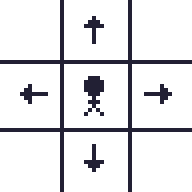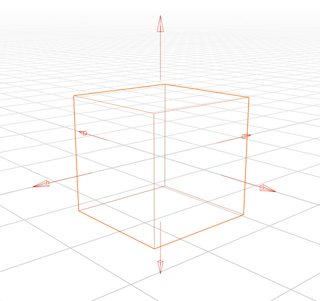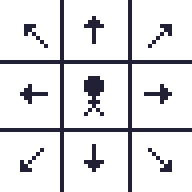Neighborhoods
CardinalNeighborhood
Allows movement in the four cardinal directions on a 2D plane: North, East, South, and West.

CardinalNeighborhood3d
Allows movement in all six cardinal directions in 3D space: North, East, South, West, Up, and Down. This 3D neighborhood is also well-suited for 2D tilemap games with height layers, such as isometric maps.

OrdinalNeighborhood
Extends cardinal movement by allowing diagonal movement in addition to the standard directions.

OrdinalNeighborhood3d
Extends CardinalNeighborhood3d by allowing diagonal movement in all three dimensions—e.g., North-East-Up—for a total of 26 possible directions.
Like CardinalNeighborhood3d, this is also useful for 2D tilemap games with height layers, such as isometric maps.
A NeighborFilter is available to restrict diagonal movement to only within the same depth level, reducing the number of directions from 26 to 14. See Filters for more details.
Implementing the Neighborhood Trait
While you can implement your own Neighborhood, it is not currently recommended.
To support neighbor caching, each grid cell stores its neighbors in a u32 bitmask, which limits the system to 26 directions. The provided built-in neighborhoods already cover all of these directions.
Switching to a per-cell Vec or HashMap of neighbors would drastically increase memory usage—potentially several gigabytes on large maps (e.g., 1024×1024x4 grids).
Before implementing a custom Neighborhood, check whether a built-in Filter already provides the neighbor generation behavior you need, or consult the documentation for creating a custom filter.